New, Now, Next
In 1999, Universal made its first real push to take on Disney in an astounding all-at-once growth spurt that transformed the single park packed with PG-13 disaster rides into a multi-day, multi-park resort for families. Their second gate would prove once and for all that Universal could operate more than soundstage-packed studio parks; they could meet and even exceed Disney’s standards for storytelling and detail.
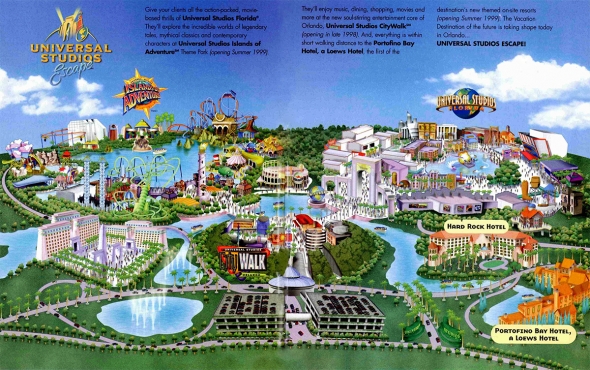
The problem is, Universal’s first attempt to market their new resort fell flat. Given that no one else had expanded a single park into a resort in such a way, Universal was a student of the school of hard knocks. So suddenly, Universal Studios Florida was joined by Universal Studios Islands of Adventure and Universal Studios CityWalk at the new Universal Studios Escape. You can imagine how audiences barely familiar with Universal at all had no idea what was going on. Did Universal Studios Escape join Universal Studios, or did Universal Studios become Universal Studios Escape? Universal Studios Islands of Adventure at Universal Studios Escape? What exactly were these “Islands?” A ride? A show? A new “land?”
Put simply, Universal’s relaunch had been flubbed, and they would have a lot of ground to make up if they wanted their parks to rival Disney.
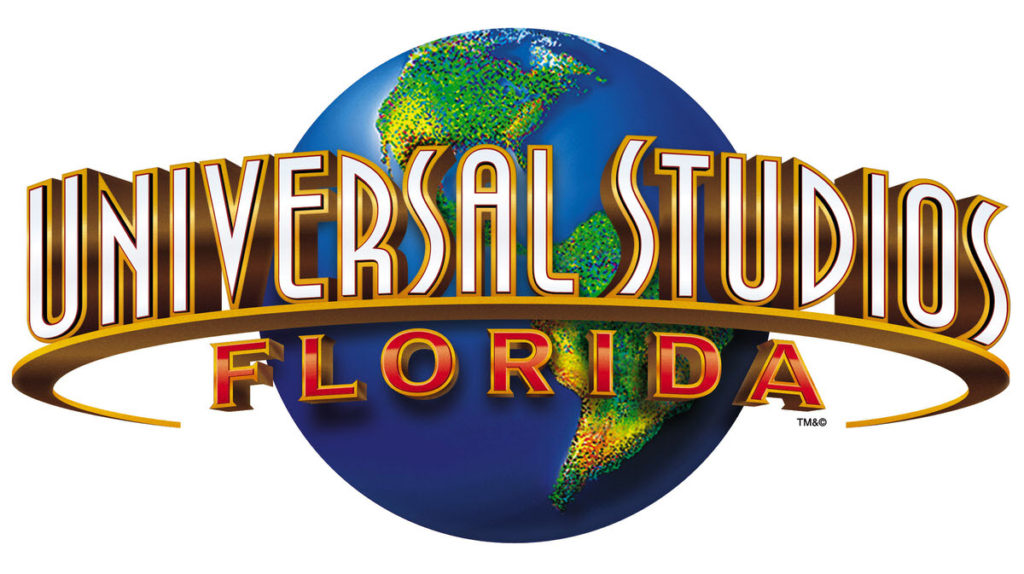
Beginning in 2002, Universal kicked off a wild reimagining of its original Floridian park, Universal Studios. Desperate and determined to convince audiences to visit, they set out to systematically redefine the park as a place where guests could ride the biggest blockbusters of today. They wanted their Studios park to be home to the hottest brands, the most popular stories, and the biggest box office hits.
And seemingly every single year beginning in 2002, one of Universal’s classic attractions based on famed films of yesteryear shuttered to make way for whatever was “now,” often, admittedly, with little care for longevity or nostalgia.
Put another way, Universal seemed content leaving “timelessness” to Disney. If you come to Universal, however, expect to see the characters, stories, and stars you care about now, even if that means rides’ lifetimes and popularities are measured in seasons, not decades. And right then, Universal had a new hit on its hands.
Buried

1999’s The Mummy directed by Stephen Sommers had been, by all accounts, a very, very, very loose reimagining of Boris Karloff’s iconic performance in the 1932 Universal classic (interestingly, having been released one year before King Kong). Even if critics wrote the film off as a brainless action film, $416 million in box office receipts said folks were enamored with the Egyptian exploits of Rick and Evie O’Connell.
The 2001 sequel, The Mummy Returns, bested the original with $433 million. And it must have been then and there that Universal decided that The Mummy would be their first foray into the modernization of Universal Studios Florida.
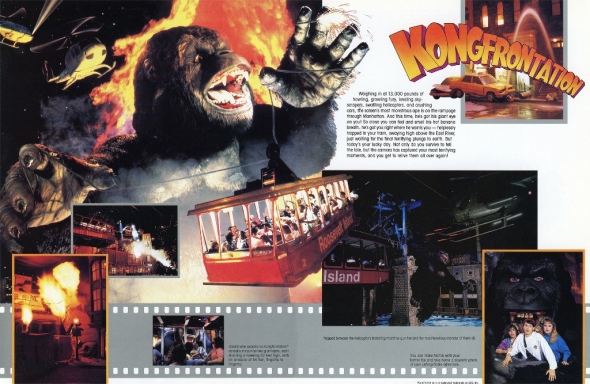
Kongfrontation closed on September 8, 2002, with insiders chalking the decision up to the high staffing and operation cost of the ride, plus its complex and high-maintenance ride system and animatronics. More than likely, the enormous six-story, 62,000 square foot showbuilding Kong inhabited was simply a canvas too large to pass up.
Believe it or not, Kong was the first of Universal’s storied sentinel attractions to crumble to the company’s push for popular properties, and that closure would set a new precedent. If Kong could close, then nothing was sacred.
Revenge of the Mummy

Kong vacated, and after two years of construction and $40 million, Revenge of the Mummy opened in the park’s New York streets. The New York Penn Station exterior was recast as the Museum of Antiquities, currently showcasing a collection of Egyptian artifacts.
The plot of the ride? It’s hard to explain. The Museum of Antiquities is a ruse that quickly gives way to a “behind the scenes” look at the making of an imaginary next installment in The Mummy franchise, Revenge of the Mummy. Costumes, props, and video interviews indicate that odd things have been happening on set, perhaps related to a real curse that followed the authentic set pieces from Imhotep’s real tomb. One-two-skip-a-few and we’re in a real tomb (or is it a set?) where we board 1930s mine carts (so, it’s not a set?) and journey deeper into the tomb where a member of the crew named Reggie (okay, it’s definitely a movie set, then?) awakens the real Imhotep (so it’s not a set) and his ancient army.
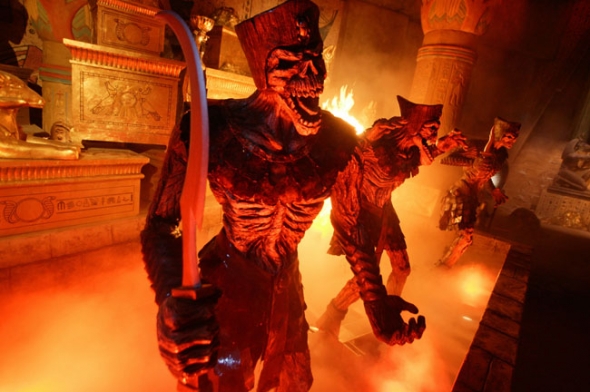
Okay, so it’s as contrived as Universal’s best. But see, the “studio” theme lets us ignore such anachronisms. We’re not supposed to think about it that hard. After all, there’s no logical or sensical way to bring us from New York to the haunted depths of an Egyptian tomb, so we simply excuse it, shrug, and have fun.
To be clear, Revenge of the Mummy is one of the most outright fun rides on Earth. Genuinely surprising, brilliantly themed, and wildly exciting, the coaster’s unassuming stats are more than made up for with Disney-level details and shocking twists throughout, including a figure we rank high on our must-read countdown of the best animatronics on Earth. We enjoy the ride so much, it earned its own in-depth feature in our brand new series, Modern Marvels: Revenge of the Mummy. Make the jump if you’re interested in seeing what surprises this cutting-edge ride hides…
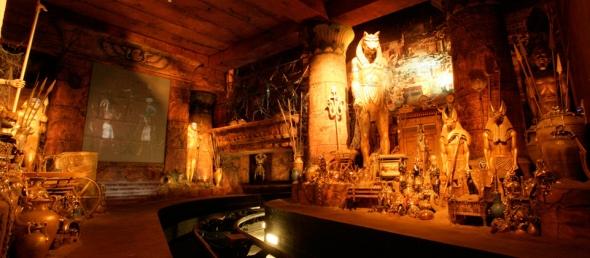
And those with a keen eye for detail will note that Universal did pay loving tribute to the building’s former resident in a few places. Graffiti from Kong’s New York queue remains in Mummy’s, and a golden statue of the great ape himself resides in Imhotep’s glistening treasure room. But most surprisingly, a lights-on tour of the ride’s twisted coaster section would reveal remains of Kong’s suspended tracks dotted across the ceiling. Many of the track sections were built into the ride’s structure, making their removal impossible.
Believe it or not, Revenge of the Mummy has now been inhabiting the Penn Station showbuilding longer than Kongfrontation did to begin with…!
As for Kong, it seemed for a while that he and his immortal legacy would live on physically as nothing more than mere cameos and asides in Revenge of the Mummy. But an unexpected innovation back in Hollywood would change everything…
Ape from the Ashes

Even as Kongfrontation closed in 2002, the ride that inspired it – the original King Kong Encounter on Universal Studios Hollywood’s Studio Tour – remained. For 32 years, the original 1986 figure shook tram after tram of Universal guests (though in later years, the admittedly aging animatronic left them more literally shook than emotionally. At Christmas, he even began donning a Santa suit and hat, merrily “ho-ho-ho-ing” as snow fell in the streets of the soundstage).
It seemed that, even if Orlando’s Kong had fallen to progress, Hollywood’s would remain… Until June 1, 2008 when a massive fire broke out on the Studio backlot. For 12 hours, the raging fire burned, destroying the Courthouse Square set from Back to the Future, a streetscape used in Spider-Man 2 and Transformers, and… the showbuilding containing King Kong Encounter.
Just two days later, Universal announced their decision to not rebuild the attraction.
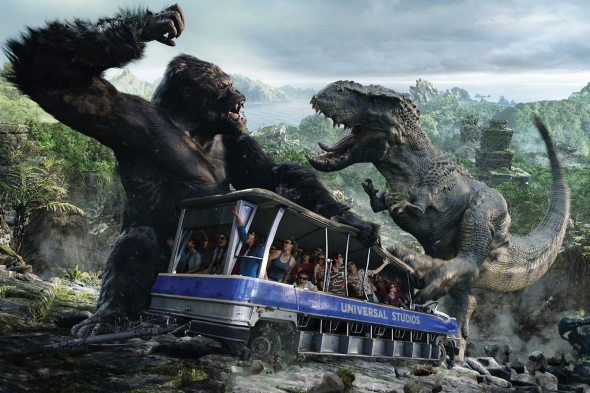
However, that didn’t mean Kong would be gone from Hollywood’s Studio Tour forever. Just two years later on July 1, 2010, a brand new portion of the Studio Tour opened. King Kong: 360 3D is stylistically based on Peter Jackson’s 2005 remake of King Kong – the second remake after the 1976 version.
For better or worse, this new 360-degree 3-D experience would be all digital, with the tram pulling into a soundstage where enormous curving, wrapped tunnel screens would surround the tram completely. Parked on a motion platform between the two screens, the world of Skull Island could come to life, simulating bursts of speed, falling, and rising with action happening on all sides (and above) the tram.
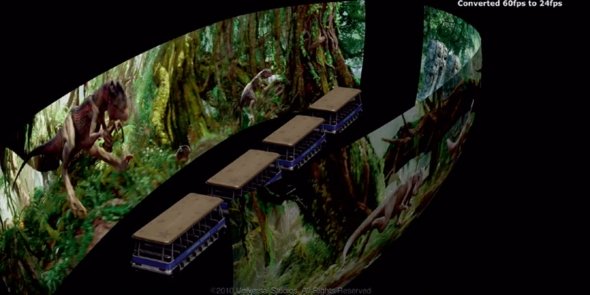
It’s probably appropriate given that – true to the Studio Tour’s roots – the 21st century version of a Kong encounter had gone from practical to digital, just like moviemaking in general. King Kong: 360 3-D is impressive and technologically marvelous. Still, we argue that the gravitas of seeing a character face-to-face is unbeatable, even with the best digital effects.
But consider this: in 1990, Universal Studios Florida innovated and expanded upon Hollywood’s Kong Encounter from the Studio Tour. Now, more than two decades later, Universal Studios Florida would innovate and expand upon Hollywood King Kong: 360 3D from the Studio Tour, and just like the good ole days, that would mean expanding it into a full standalone attraction.
On the last page, we’ll dissect the spiritual sequel to Kongfrontation and see if the return of the King is all it was cracked up to be… Read on…


